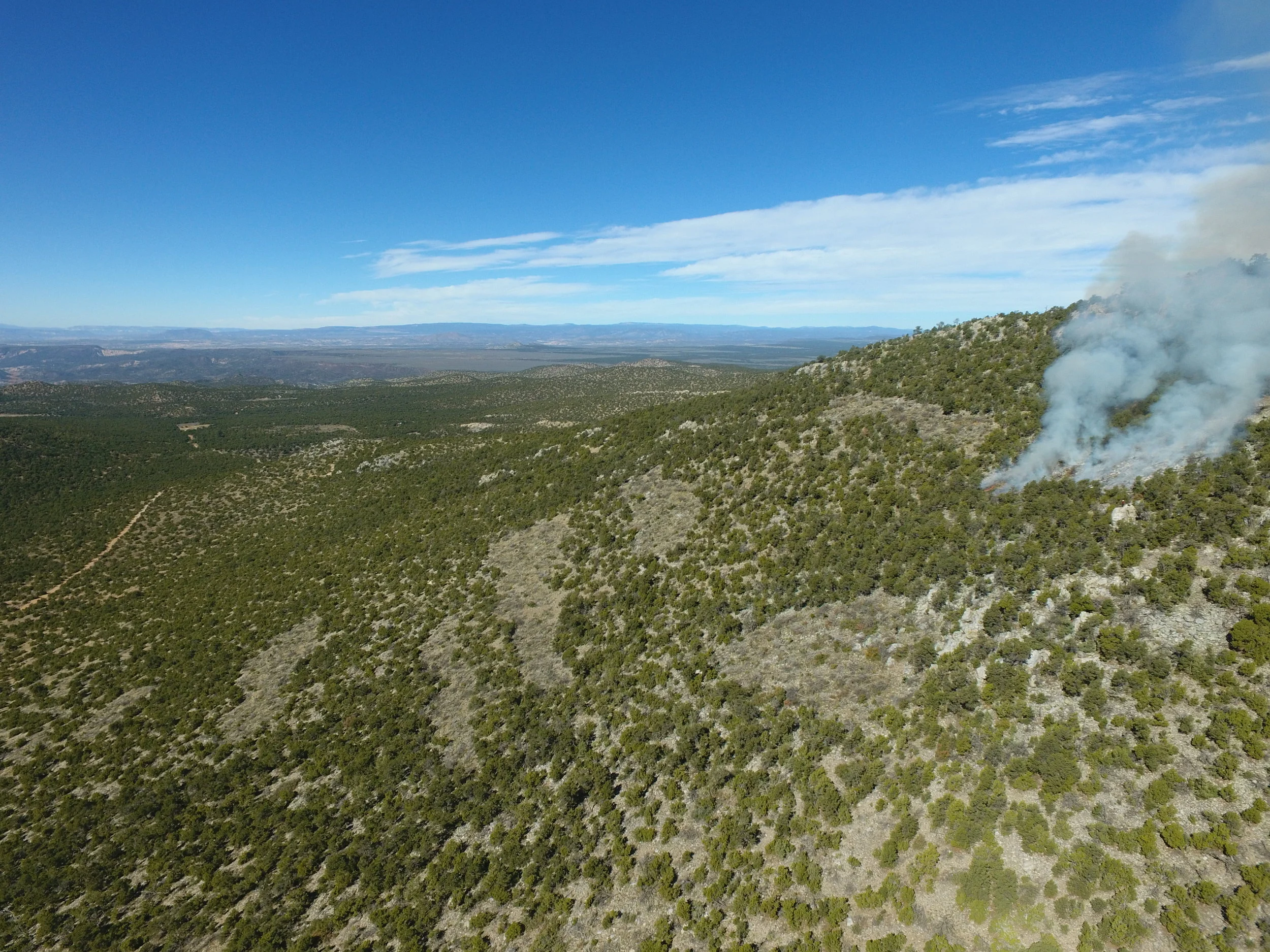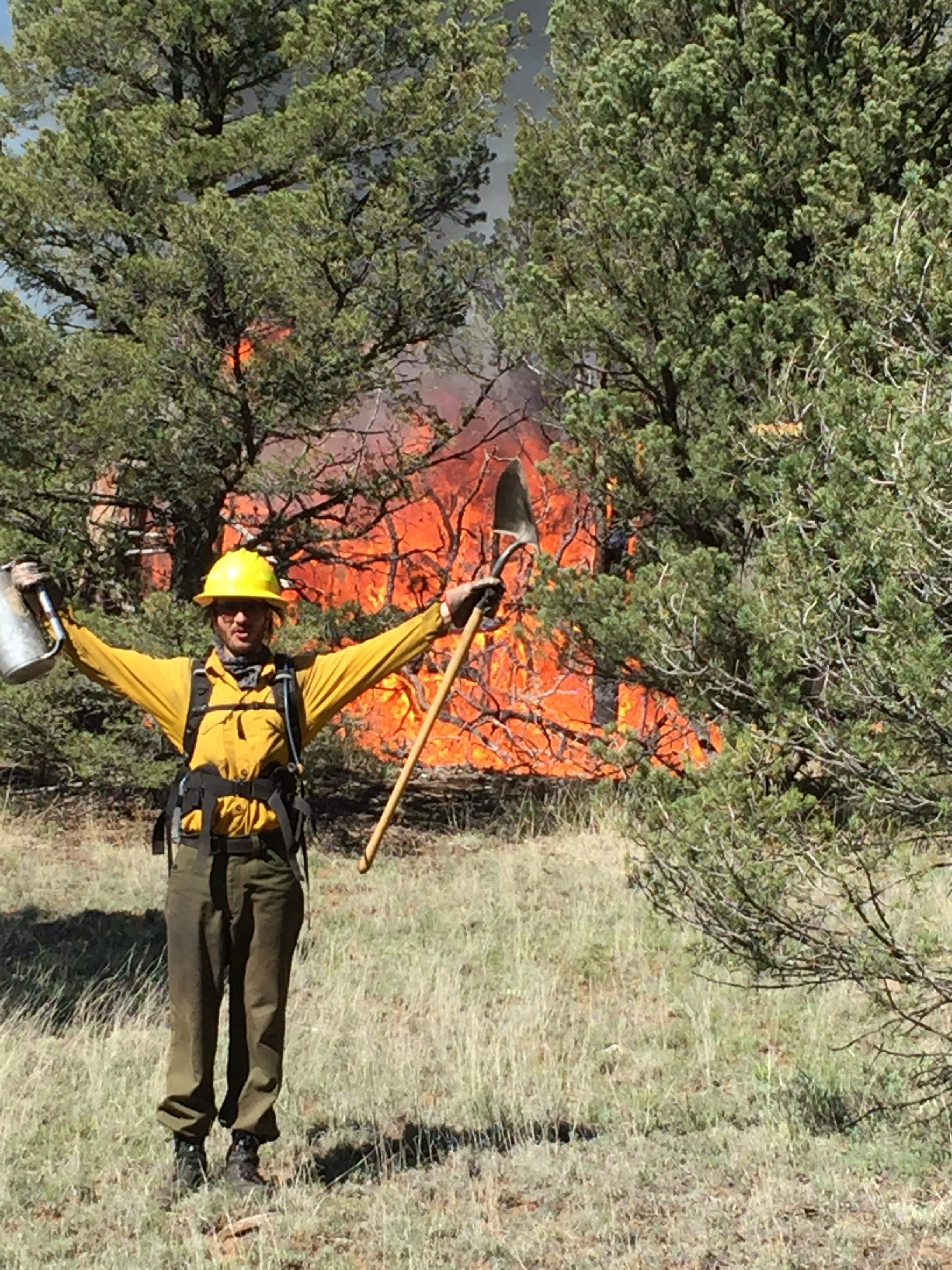With all the moisture we in New Mexico throughout 2019, and the vegetation growth that came with it, we can expect fire hazard to increase as this new vegetation dries out. So even in times when the air is clear of wildfire smoke and there is still water in our creeks and streams, it is important that we do not get complacent. Getting your neighbors or friends together, popping some popcorn, and discussing these concepts in the comfort and safety of the fire off-season may create space for more productive discussion then times when stress levels are high and we feel our options are limited. If you or someone in your community needs ideas about how to start these kinds of conversations, please contact Gabe Kohler at gabe@forestguild.org. For popcorn recipes click HERE. You got this!!
This post summarizes key concepts from the Living With Fire guide. To view the full guide click HERE. These concepts reflect the combined experience of hundreds of firefighters, and are sure to make you look like a wildfire mitigation expert when you unveil them to your neighbors.
Community Protection
Use these Living With Fire concepts to engage your community in wildfire preparedness
Fuelbreak: A fuelbreak is a strip of land where highly flammable vegetation is removed to reduce the wildfire threat. Fuelbreaks change fire behavior by slowing it down, reducing the length of fames and preventing the fire from reaching tree canopies. Fuelbreaks can improve the success of fire retardant dropped from the air, provide a safer area for firefighters to operate and allow for easier creation of firelines (a strip of bare ground established during a wildfire). Shaded and greenstrip are types of fuelbreaks. Community fuelbreaks are particularly effective when integrated with the defensible space of adjacent homes. They can be manmade or naturally occurring (rock outcrops, rivers and meadows).
Safe Area: A safe area is a designated location within a community where people can go to wait out a wildfire. Often, safe areas are ball fields, irrigated pastures, parks and parking lots.
Access
Use these Living With Fire concepts to engage your community in wildfire preparedness
Address: The home address should be readily visible from the street. The address sign should be made of reflective, noncombustible material with characters at least 4 inches high.
Gated Driveways: Electronically operated driveway gates require key access for local fire departments and districts.
Turnarounds: Homes located at the end of long driveways or dead-end roads should have turnaround areas suitable for large fire equipment. Turnarounds can be a cul-de-sac with at least a 45-foot radius or a location suitable for a 3-point turn.
Turnouts: Homes located at the end of long, narrow streets and dead ends can deter firefighters and complicate evacuation. If possible, create turnouts in the driveway and access roads that will allow two-way traffic.
Driveway Clearance: Remove flammable vegetation extending at least 10 feet from both sides of the driveway. Overhead obstructions (overhanging branches and power lines) should be removed or raised to provide at least a 13½-foot vertical clearance.
Secondary Road: When communities only have one way in and out, evacuation of residents while emergency responders are arriving can result in traffic congestion and potentially dangerous driving conditions. A second access road, even one only used for emergency purposes, can improve traffic flow during a wildfire and provide an alternate escape route.
Street Signs: Street signs should be posted at each intersection leading to your home. Each sign should feature characters that are at least 4 inches high and should be made of reflective, noncombustible material.
Bridges and Culverts: Inadequately built bridges and culverts may prevent firefighting equipment from reaching your home. Ask your local fire marshal about proper bridge and culvert design for your area.
Road Width and Grade: Roads should be at least 20 feet wide and long driveways should be at least 12 feet wide with a steepness grade of less than 12 percent.
Defensible Space
Use these Living With Fire concepts to engage your community in wildfire preparedness
Wildland Fuel Reduction Area: This area usually lies beyond the residential landscape area and is where sagebrush, cheatgrass, piñon and other wild plants grow. Within this area:
· Remove all dead vegetation (dead shrubs, dried grass and fallen branches).
· Thin out thick shrubs and trees to create a separation between them.
· Prevent ladder fuels by removing low tree branches, and removing or pruning any shrubs under the tree.
Noncombustible Area: Create a Noncombustible Area at least 5 feet wide around the base of your home. This area needs to have a very low potential for ignition from flying embers. Use irrigated herbaceous plants (lawn, ground cover and flowers), rock mulches, or hard surfaces (concrete, brick and pavers) in this area. Keep it free of woodpiles, wood mulches, dead plants, dried leaves and needles, flammable shrubs (sagebrush and juniper) and debris.
Lean, Clean and Green Area: For a distance of at least 30 feet from the home, there should be a lean, clean and green area. Lean indicates that only a small amount of flammable vegetation, if any, is present within 30 feet of the house. Clean means there is no accumulation of dead vegetation or flammable debris within the area. Green denotes that plants located within this area are kept healthy, green and irrigated during fire season. For most homeowners, the lean, clean and green area is the residential landscape. This area often has irrigation, contains ornamental plants and is routinely maintained.
Built Environment
Use these Living With Fire concepts to engage your community in wildfire preparedness
Eaves: Embers can accumulate under open eaves and enter the attic through gaps in construction materials. Covering the underside of the eaves with a soft, or boxing in the eaves, reduces the ember threat. Enclose eaves with fiber cement board or 5/8-inch-thick, high-grade plywood. If enclosing eaves is not possible, fill gaps under open eaves with caulk.
Exterior Siding: Wood products (boards, panels and shingles) are common siding materials. However, they are combustible and not good choices for fire-prone areas. Noncombustible siding materials (stucco, brick, cement board and steel) are better choices. If using noncombustible siding materials is not feasible, keep siding in good condition and replace materials in poor condition.
Windows and Skylights: Windows are one of the weakest parts of a home and usually break before the structure ignites. This allows burning embers and heat to enter the home, which may lead to internal ignition. Single-pane windows and large windows are particularly vulnerable. In high fire-hazard areas, install windows that are at least double-glazed and that utilize tempered glass for the exterior pane. The type of window frame (wood, aluminum or vinyl) is not as critical. However, vinyl frames should have metal reinforcements. Keep skylights free of pine needles leaves and other debris, and remove overhanging branches. If skylights are to be placed on steep pitched roofs that face large amounts of nearby fuels (a mature pine tree or another house), consider using flat ones constructed of double-pane glass.
Vents: Attic, eave and foundation vents are potential entry points for embers. All vent openings should be covered with 1/8-inch or smaller wire mesh. Another option is to install ember-resistant vents. Do not permanently cover vents, as they play a critical role in preventing wood rot.
Rain Gutters: Rain gutters trap flying embers. Always keep rain gutters free of leaves, needles and debris. Check and clean them several times during fire season.
Chimneys: Chimney and stovepipe openings should be screened with an approved spark arrestor cap.
Roof: Homes with wood-shake or shingle roofs are much more likely to be destroyed during a wildfire than homes with fire-resistant roofs. Consider replacing wood-shake or shingle roofs with a Class-A fire-resistant type (composition, metal or tile). Openings in roofing materials, such as the open ends of barrel tiles, should be plugged to prevent ember entry and debris accumulation. Regardless of the type of roof, including a flat roof, keep it free of fallen leaves, needles and branches.
Firewood: Firewood stacks should be located at least 30 feet from the home. If the stacks are stored uphill from the house, make sure that burning firewood cannot roll downhill and ignite the home. Consider using an ember-resistant firewood cover.
Decks: Decks using wood and wood-plastic materials are often combustible. Keep all deck materials in good condition. As an option, consider using fire-resistant rated materials. Routinely remove combustible debris (pine needles, leaves, twigs and weeds) from the gaps between deck boards and under the deck. Enclosing the sides of the deck may reduce this type of maintenance. Do not store combustible materials under the deck.
Flammable Items: Keep the porch, deck and other areas of the home free of easily combustible materials (baskets, dried flower arrangements, newspapers, pine needles and debris).
Engaging your neighbors in a conversation about how to improve community protection, access, defensible space, and the built environment around your home may make all the difference. By the time wildfire has started, it is too late. It takes leadership and initiative before the fire to save lives and protect property through wildfire adaptation. If you, or someone in your neighborhood has what it takes to develop these leadership skills, please reach out to Fire Adapted Communities New Mexico, and we can help support you in these challenging conversations. For more information email Gabe Kohler at gabe@forestguild.org.
Additional Resources
For a toolkit on being a community fire ambassador, check out: Santafefireshed.org/ambassador























